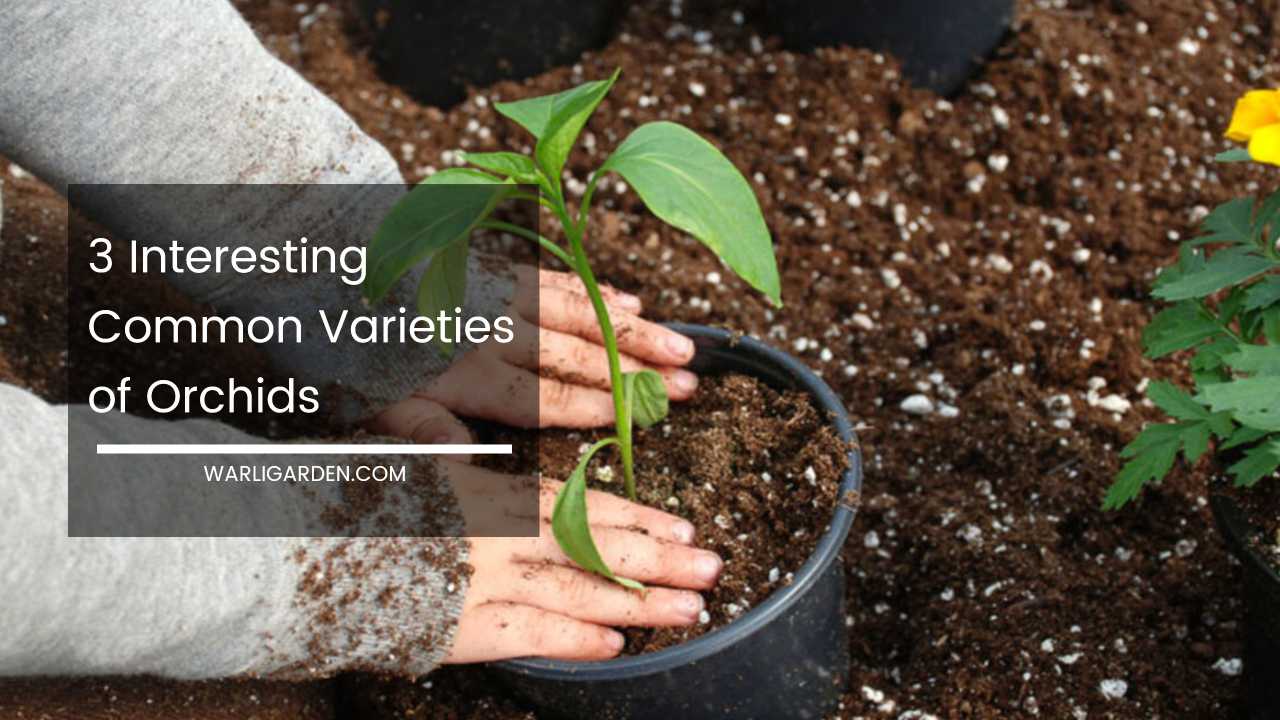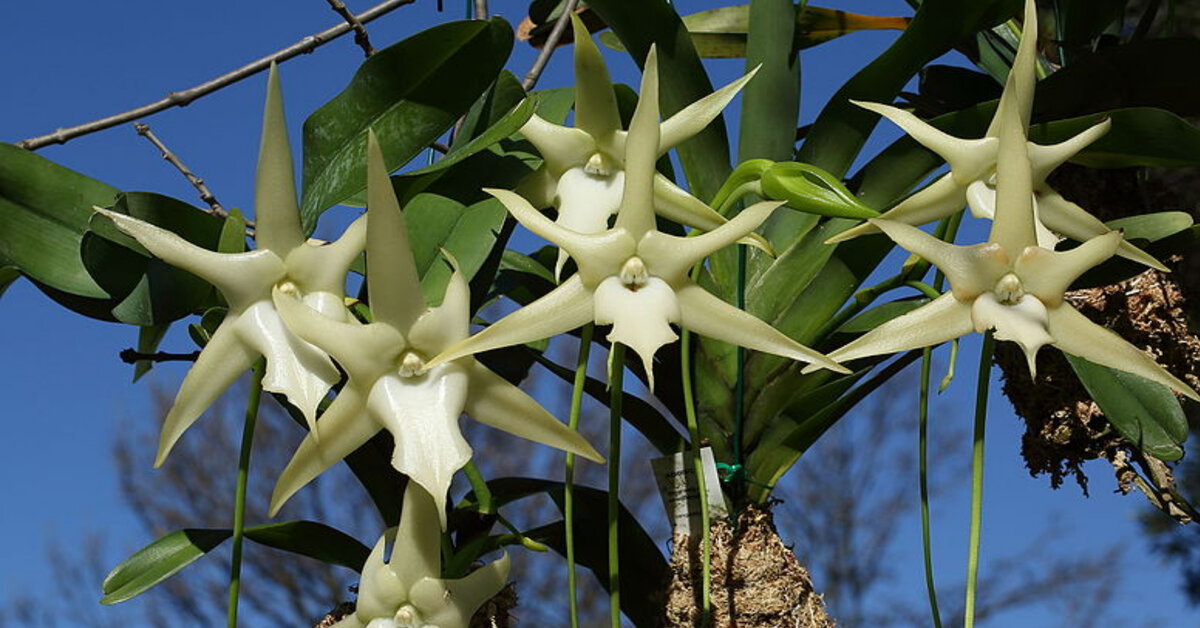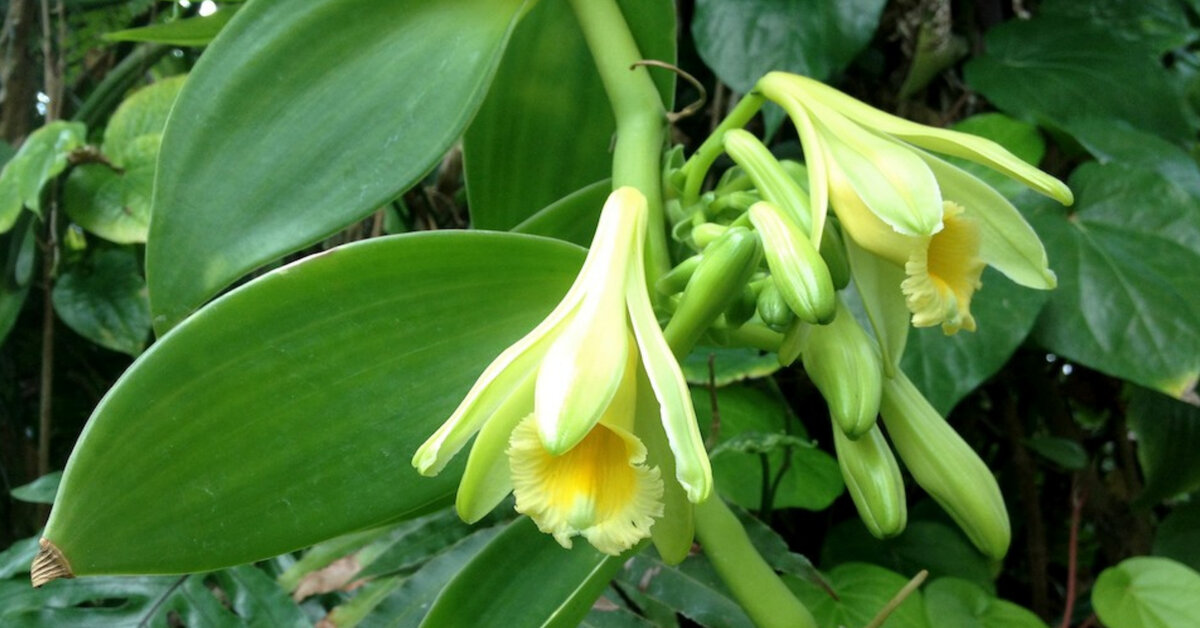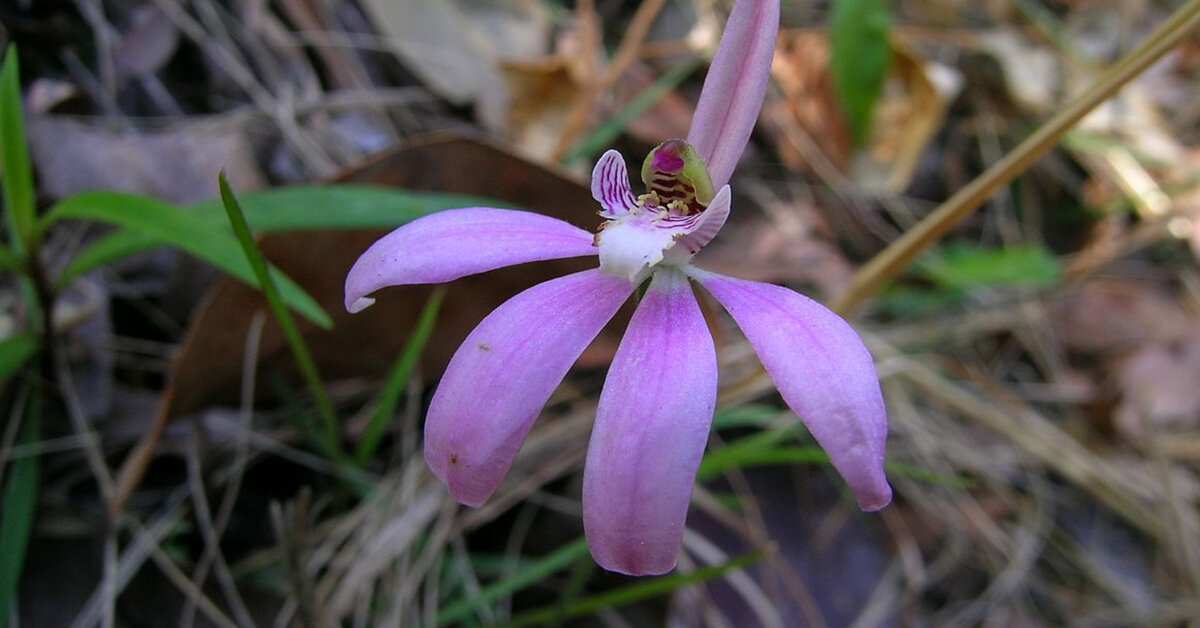
There are almost 22,000 known species of orchids; too many for you to study in a lifetime.
Among those thousands of orchid species are the Anraecum sesquipedale, Vanilla planifolia, and the Caladenia robinsonii. These are among some of the most interesting species of orchid.

Anraecum sesquipedale
Other names: Darwin’s Orchid, Star of Bethlehem Orchid, Comet Orchid, Christmas Orchid, and King of the Angraecums.
History: In 1798, Louis-Marie Aubert du Petit-Thouars, a French botanist, first discovered Anraecum sesquipedale. However, the specie has remained uncategorized until 1822.
Habitat: Usually found in low altitude lands in Madagascar, they are typically seen attached to tree branches or trunks.
While smaller plants can be found in higher parts of the trees, large plants are usually lodged as low as 12 feet from the ground.
Description: Darwin’s Orchid flowers are star-shaped and waxy and are typically clustered in 30-centimeter inflorescence.
The flowers are initially green in color but turn white and light green after a few days. The flowers appear from December to January, hence the name Christmas Orchid.

Vanilla planifolia
Other names: Flat-leaved Vanilla, Tahitian Vanilla, Vanilla
History: Vanilla planifolia is just one of the 60+ species under the genus Vanilla. This particular species was discovered by the Aztecs in the 16th century.
Habitat: Preferring hot, humid, tropical climates, the Flat-leaved Vanilla usually grows in Mexico, Madagascar, and some parts of Asia. They grow upright on tree trunks and branches.
Description: Vanilla is a type of orchid in vines. It produces yellow-green flowers that usually measure about 5 centimeters across. The blooms of Vanilla planifolia only last for a day or so and do not bear fruit unless pollinated manually. If the flowers pollinate successfully, the fruits will come out as long pods, which we call Vanilla beans.

Caladenia robinsonii
Other names: Frankston Spider Orchid
History: A rare orchid species, Caladenia robinsonii was first described in 1991 by G.W. Carr. It was first collected in the area of Frankston North in Melbourne, Victoria State, Australia.
Unfortunately, that said population was destroyed when the local government developed the area for a housing project in the 1990s.
Though a second population was found, potential threats like weed invasion, rabbit grazing, trampling, and fire can possibly destroy the remaining 40 plants in the area.
In order to prevent the species from becoming completely extinct, the Royal Botanic Gardens conducted a rehabilitation drive where volunteers planted about 150 Frankston Spider Orchids in 2010.
Habitat: Endemic in that area of Australia, the plant prefers the varied climate Victoria offers. The state has semi-arid, hot weather in some areas, while other areas stay cool and temperate.
Description: Each mature plant offers a single red and yellow bloom that is carried on a 30-centimeter, hairy stem.
The flower measures around 4 centimeters and features narrow sepals that spread horizontally. The plants bloom between September and October.
Those are just a few very interesting species of orchids. As I wrote earlier, you will never be able to study all of them. But I am confident you can find unlimited species of orchids that will keep you fascinated for the rest of your days.
